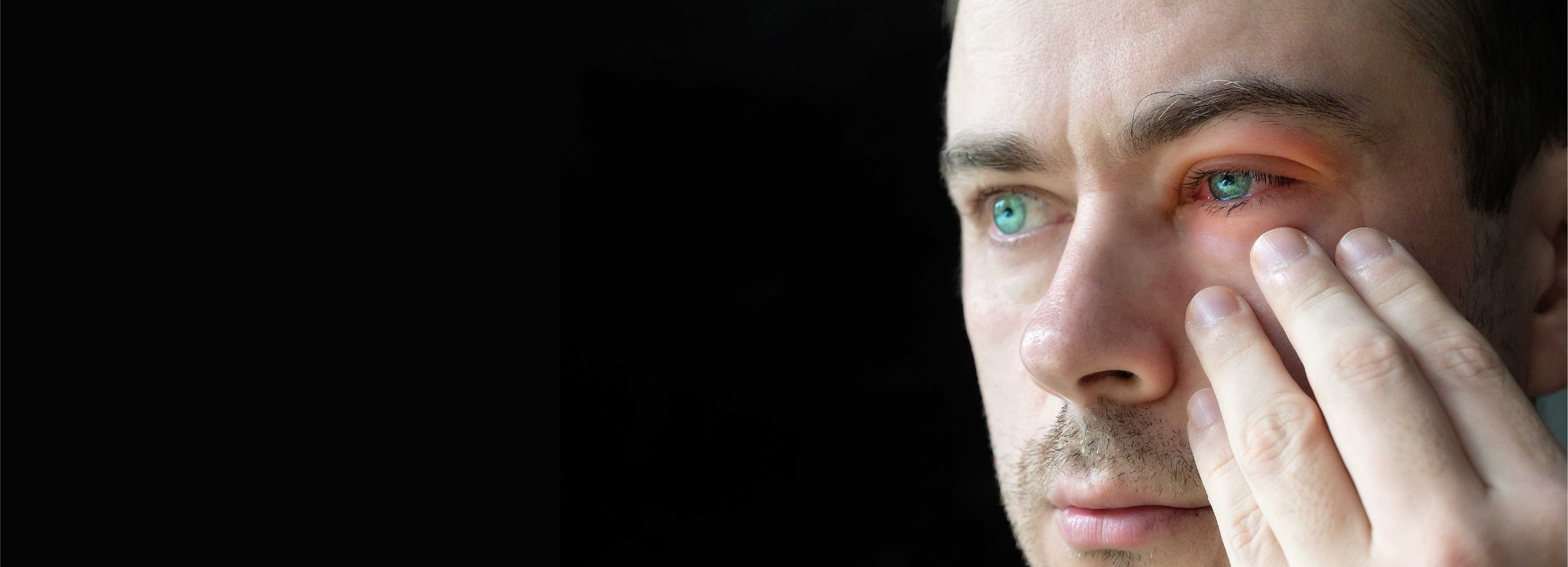Conjunctivitis (Pink Eye)

What is Conjunctivitis (Pink Eye)?
Conjunctivitis, also known as pink eye, is the inflammation of the tissues that cover the eyelid, known as conjunctiva, due to infection or allergy. It can occur in one eye or both eyes. Allergens, irritants, bacteria, and even viruses such as cold viruses or coronaviruses can cause pink eye. Conjunctivitis is characterized by redness, swelling, and discharge in the eyes. Although conjunctivitis is often perceived as a minor condition, if not diagnosed and treated in a timely manner, it can lead to serious vision impairments. Therefore, it is crucial to determine the cause of conjunctivitis and plan appropriate treatment accordingly.
What Causes Conjunctivitis (Pink Eye)?
The causes of conjunctivitis (pink eye) can include viral infections, bacterial infections, allergies, chemical substances, and foreign bodies.
- Viruses such as cold viruses, adenoviruses, can cause conjunctivitis. It can spread rapidly, especially among people in crowded environments.
- Bacteria like Staphylococcus aureus, Streptococcus pneumoniae can lead to pink eye.
- Exposure to allergens such as pollen, dust, mold spores, animal fur can cause allergic conjunctivitis.
- Contact with chemical substances can cause irritation. These substances may include cleaning products, deodorant sprays, or chlorine in swimming pools.
- Improper cleaning or usage of contact lenses can lead to pink eye.
- Rubbing or scratching the eyes vigorously can cause pink eye.
- Foreign bodies entering the eye can cause pink eye.
Types of Conjunctivitis
Bacterial Conjunctivitis: It occurs due to bacterial infections. Bacteria settle in the conjunctiva after coming into contact with the eyes, causing inflammation. Symptoms include discharge, redness, swelling, and a gritty feeling.
Viral Conjunctivitis: It is an infection caused by viruses. It is often associated with colds, flu, or other upper respiratory tract infections. Symptoms include watery eyes, redness, grittiness, and sensitivity to light.
Allergic Conjunctivitis: It occurs due to exposure to allergens such as pollen, dust mites, animal fur. Symptoms include watery eyes, itching, redness, and swelling.
Symptoms of Conjunctivitis
Common symptoms of conjunctivitis, also known as pink eye, include:
- Redness in the eyes, in one or both eyes
- Swelling of the eyelids
- Discharge from the eyes
- Watery eyes and a gritty feeling
- Feeling the need to rub the eyes
- Sensitivity to light
- Itching in the eyes
How is Conjunctivitis Treated?
The treatment for conjunctivitis depends on the cause:
- Viral conjunctivitis often resolves on its own without specific antiviral treatment. However, cold compresses and eye drops can be used to relieve symptoms.
- Bacterial conjunctivitis can be treated with antibiotics. Antibiotic eye drops may be used.
- Allergic conjunctivitis can be relieved with eye drops. Avoiding allergens is also important.
- Irritant conjunctivitis due to dry eyes can be treated by moisturizing the eyes with artificial tears eye drops.
What is the Recovery Time for Conjunctivitis?
Conjunctivitis can be categorized into acute and chronic types. Acute conjunctivitis usually lasts less than 3 weeks and typically resolves within 7-8 days, especially with treatment, which can reduce the recovery time to an average of 4-5 days. Chronic conjunctivitis, on the other hand, can last longer than 3 weeks and is often associated with chronic conditions like blepharitis or dacryocystitis. Treatment can expedite the healing process.
How to Prevent Conjunctivitis?
- Avoid touching the eyes, as rubbing or scratching can increase the risk of infection.
- Avoid sharing personal items such as towels, pillowcases, or makeup materials with others.
- Contact lens users should follow instructions for cleaning and disinfecting their lenses. Proper hygiene reduces the risk of conjunctivitis.
- Those suffering from allergic conjunctivitis should take measures to reduce exposure to allergens, such as spending less time outdoors during pollen season or keeping windows closed at home.
- Wearing sunglasses in windy weather can protect the eyes from external factors.
- When working in dusty or chemical environments, using appropriate eye protection is important.
Pink Eye in Babies
Pink eye or conjunctivitis in babies can present similar symptoms to those in adults, including redness, swelling, discharge, and discomfort in the eyes. However, the causes and treatment of conjunctivitis in babies may differ from adults. Causes of pink eye in babies can include:
- Bacterial conjunctivitis can occur in babies due to bacteria that can pass from the mother during childbirth.
- Viral conjunctivitis in babies can develop due to colds, flu, or other respiratory infections. Treatment focuses on alleviating symptoms.
- Babies can be sensitive to allergic conjunctivitis. In such cases, protecting the baby from environmental allergens is important.
